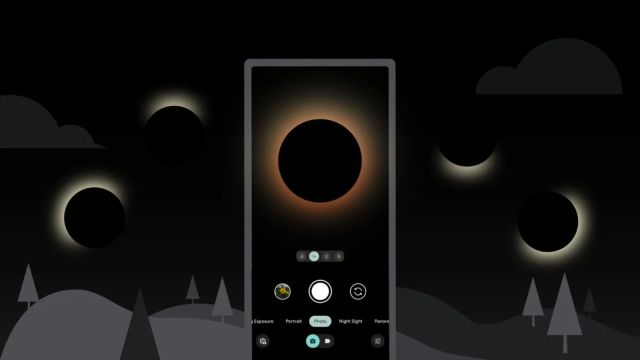Taking photos of total solar eclipse without filter might damage camera sensor, warns NASA
NASA has issued a warning for those looking to capture photos of the total solar eclipse using their smartphone camera, saying it might damage the sensor. The space agency also shared some photography tips to capture stunning photos.
 The eclipse won't be visible in India, but you can watch it online. (Image Source: Google)
The eclipse won't be visible in India, but you can watch it online. (Image Source: Google)NASA has warned those looking to capture the total solar eclipse (April 8) using their smartphone, saying that just like our eyes, taking photos of the once-in-a-lifetime event without any filter might damage the camera sensor.
The agency says that if you want to capture images of the total solar eclipse, use a pair of solar viewing glasses, also called eclipse glasses in front of your camera similar to how you wear them. The advisory also suggests removing the filter from the device when the Moon completely blocks the Sun so your phone or camera can see the Sun’s outer atmosphere – the corona.
While you can remove the eclipse glasses from your phone camera when the eclipse is at totality, make sure you wear them on your eyes as it might damage your vision.
NASA also claims that you don’t need a professional camera to capture images of the total solar eclipse and that “any camera is a good camera”. In case your phone does not have a dedicated telephoto lens, try capturing landscape shots and the changing environment.
If you want to take stunning shots, try using equipment like a tripod as it will help you stabilise the lens and avoid taking blurry pictures in low lighting. Also, make sure you use a delayed shutter release timer. Before the event starts, make sure you know the limits of your phone camera. If the tricky eclipse lighting is making your picture look blurry, adjust the exposure and manually focus the camera for better shots.
The Sun may take all your attention, but NASA suggests you look around as the landscape around you will be full of lighting and shadows. During the eclipse, the light will filter through leaves of trees, creating “natural pinholes that project miniature eclipse replicas on the ground.”
The total solar eclipse will start at 9:13 PM IST on Monday and end at 2:22 AM IST on Tuesday. It will be visible in parts of the United States, Mexico and Canada. However, the Moon will also cover some parts of the Sun resulting in a partial solar eclipse for those living in some Caribbean countries, Venezuela, Colombia, Spain, the United Kingdom, Ireland, Portugal and Iceland.







